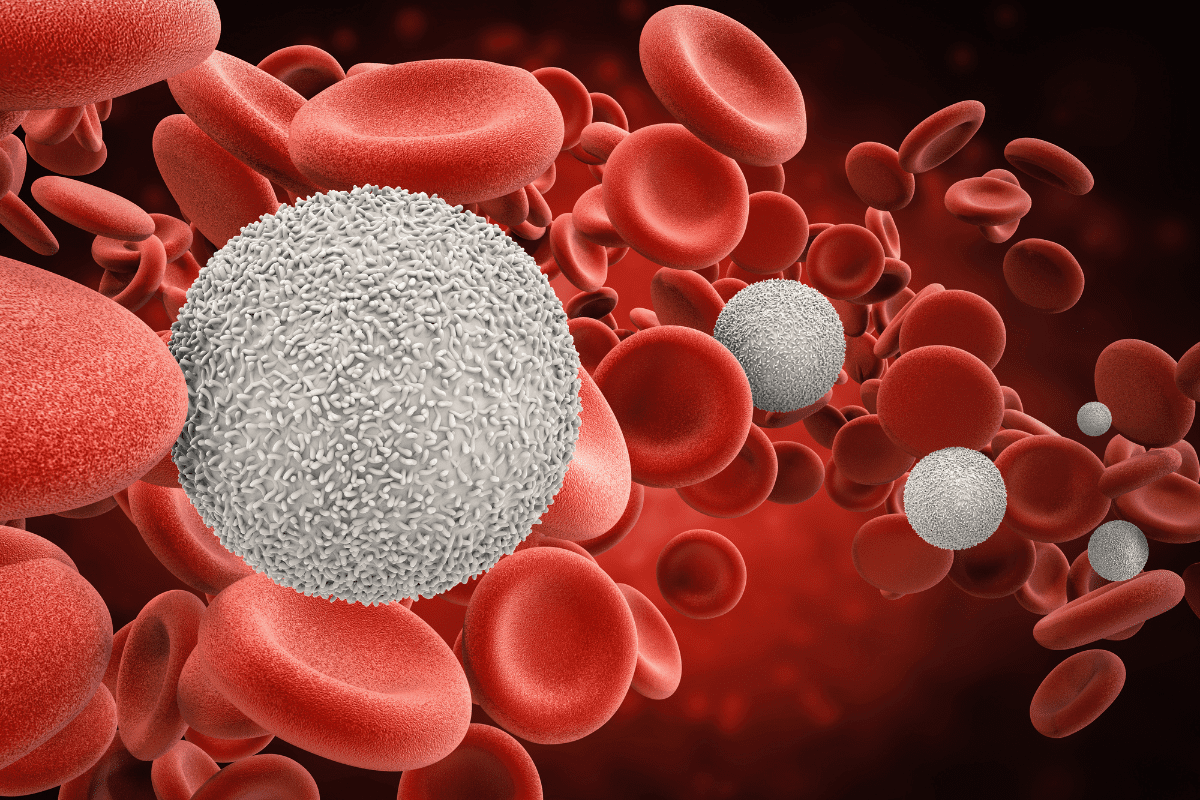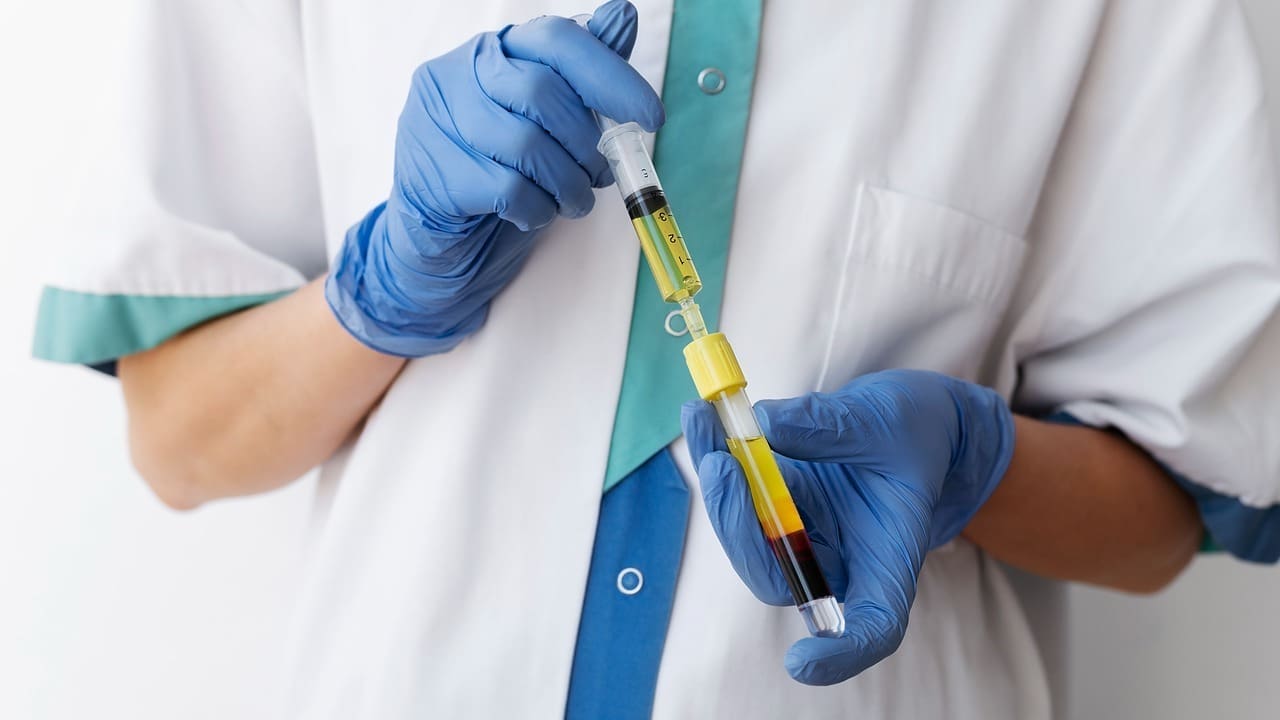Last Updated on November 27, 2025 by Bilal Hasdemir

At leading cancer treatment centers like Liv Hospital, we’re committed to providing innovative and effective treatments for abdominal cancers. One such treatment is intraperitoneal (IP) chemotherapy, which involves delivering anti-cancer drugs directly into the peritoneal cavity.
IP chemotherapy is particularly effective for cancers such as ovarian and gastric cancer. By understanding the benefits and potential side effects of this treatment, patients can make informed decisions about their care.
Key Takeaways
- IP chemotherapy delivers anti-cancer drugs directly into the peritoneal cavity.
- This technique is effective for treating abdominal cancers like ovarian and gastric cancer.
- IP chemotherapy reduces systemic toxicity by targeting cancer cells directly.
- Patients should be aware of the potential side effects of IP chemotherapy.
- Leading cancer centers like Liv Hospital offer IP chemotherapy as part of their treatment options.
What Are Chemotherapy Shots in Stomach and How Do They Work?
Intraperitoneal chemotherapy is a specialized treatment method that involves delivering chemotherapy directly into the abdominal cavity. This approach is particularly significant for patients dealing with cancers that affect the abdominal region, such as ovarian and gastric cancers.
Definition and Basic Principles of Intraperitoneal Chemotherapy
Intraperitoneal chemotherapy involves the administration of anti-cancer drugs directly into the peritoneal cavity, which surrounds the abdominal organs. This is achieved through an intraperitoneal port, a device surgically implanted in the abdomen. By delivering chemotherapy directly to the site of the cancer, IP chemotherapy can achieve higher local drug concentrations, increasing its effectiveness against abdominal cancers.
The use of intraperitoneal chemotherapy has been recognized for its potential to improve treatment outcomes for specific types of abdominal cancers. The direct delivery method allows for a higher dose of chemotherapy to be applied directly to the cancer site, potentially leading to more effective cancer cell destruction.
The Science Behind Direct Delivery to the Peritoneal Cavity
The science behind intraperitoneal chemotherapy lies in its ability to target cancer cells directly within the peritoneal cavity, reducing the harm to healthy cells elsewhere in the body. When chemotherapy is delivered intraperitoneally, it comes into direct contact with cancer cells in the abdominal lining and organs, potentially increasing its efficacy.
The effectiveness of intraperitoneal chemotherapy is further illustrated by its ability to achieve higher drug concentrations at the site of the cancer. The following table summarizes the key benefits of this approach:
| Benefit | Description |
|---|---|
| Higher Local Drug Concentration | Direct delivery to the peritoneal cavity allows for higher chemotherapy concentrations. |
| Reduced Systemic Toxicity | By targeting the cancer site directly, less chemotherapy is absorbed systemically, reducing side effects. |
| Increased Effectiveness | The direct application of chemotherapy can lead to more effective destruction of cancer cells. |
Understanding the principles behind intraperitoneal chemotherapy is crucial for patients and healthcare providers alike. As we continue to explore the nuances of this treatment, it’s clear that its targeted approach offers significant potential benefits for patients with specific abdominal cancers.
The Intraperitoneal Port: Essential Equipment for IP Chemotherapy
The intraperitoneal port is a crucial component in the administration of IP chemotherapy. This small device is surgically implanted under the skin and connected to a catheter that delivers chemotherapy shots directly into the peritoneal cavity.
We understand that the thought of having a device implanted under the skin can be daunting. However, the intraperitoneal port is designed to be safe and effective, allowing for targeted delivery of chemotherapy.
Anatomy and Surgical Placement of the IP Port
The intraperitoneal port is typically placed during a surgical procedure. The port is connected to a catheter that is carefully positioned within the peritoneal cavity. The placement of the port and catheter requires precision to ensure effective delivery of IP chemo.
We work with experienced surgeons who have a deep understanding of the anatomy involved. They take every precaution to minimize discomfort and ensure that the port is placed correctly.
Port Maintenance and Patient Care Guidelines
Proper maintenance of the intraperitoneal port is crucial to prevent complications. Patients receiving chemotherapy injection through the port must follow specific guidelines to care for their port, minimizing the risk of infection or other issues.
- Keep the port site clean and dry
- Monitor for signs of infection, such as redness or swelling
- Follow the healthcare team’s instructions for flushing and maintaining the port
By following these guidelines, patients can reduce the risk of complications and ensure that their intraperitoneal port remains a safe and effective means of receiving chemo injection treatment.
Key Fact #1: Higher Drug Concentration Reaches Cancer Cells
One of the most significant advantages of Intraperitoneal (IP) chemotherapy is its ability to achieve a higher drug concentration directly at the cancer site. This targeted approach is crucial in enhancing the effectiveness of the treatment.
How IP Delivery Increases Local Drug Concentration
IP chemotherapy involves delivering chemotherapy drugs directly into the peritoneal cavity, where the cancer cells are located. This method allows for a higher concentration of drugs to be in direct contact with the cancer cells, increasing the treatment’s efficacy. Studies have shown that IP chemotherapy can achieve significantly higher local drug concentrations compared to intravenous chemotherapy.
The science behind this lies in the pharmacokinetics of drug delivery. When chemotherapy is administered intravenously, it is distributed throughout the body, which can lead to lower concentrations reaching the cancer cells. In contrast, IP chemotherapy ensures that the drugs are delivered directly to the site of the cancer, maximizing the exposure of cancer cells to the therapeutic agents.
Reduced Systemic Toxicity Compared to IV Methods
Another significant benefit of IP chemotherapy is its ability to reduce systemic toxicity. By delivering drugs directly to the peritoneal cavity, the exposure of healthy cells to chemotherapy is minimized. This targeted approach helps in reducing the side effects associated with traditional intravenous chemotherapy, improving the overall quality of life for patients undergoing treatment.
We have observed that patients receiving IP chemotherapy often experience fewer systemic side effects, such as nausea and hair loss, compared to those receiving IV chemotherapy. This is because the drugs are more localized, reducing the impact on the rest of the body.
Key Fact #2: Primary Cancers Treated with Chemotherapy Shots in Stomach
Intraperitoneal chemotherapy has emerged as a vital treatment strategy for specific abdominal cancers. This approach has shown significant promise in treating cancers that are confined to or have spread within the peritoneal cavity.
Ovarian Cancer: A Primary Indication
Ovarian cancer is one of the primary indications for IP chemotherapy. Studies have demonstrated that IP chemotherapy can improve survival rates in patients with advanced ovarian cancer. The direct delivery of chemotherapy to the peritoneal cavity allows for higher concentrations of the drug to reach the cancer cells. This targeted approach can lead to better treatment outcomes.
We have seen that ovarian cancer patients benefit from IP chemotherapy due to its ability to directly target cancer cells within the abdominal cavity. The treatment protocol often involves a combination of IP and IV chemotherapy to maximize the effectiveness of the treatment.
Gastric Cancer and Peritoneal Metastasis
Gastric cancer, particularly when it has metastasized to the peritoneum, is another condition where IP chemotherapy plays a significant role. Peritoneal metastasis is a common complication of gastric cancer and is associated with a poor prognosis. IP chemotherapy offers a valuable treatment option by directly targeting the cancer cells within the peritoneal cavity.
The use of IP chemotherapy in gastric cancer treatment has shown promising results. By delivering chemotherapy directly to the site of the cancer, we can achieve higher local drug concentrations and reduce systemic toxicity. This approach can improve the quality of life for patients and potentially enhance treatment outcomes.
Some key benefits of IP chemotherapy for gastric cancer with peritoneal metastasis include:
- Higher drug concentrations at the site of the cancer
- Reduced systemic toxicity compared to IV chemotherapy
- Improved treatment outcomes due to targeted therapy
In conclusion, IP chemotherapy is a crucial treatment approach for ovarian cancer and gastric cancer with peritoneal metastasis. By understanding the benefits and applications of this treatment, we can better support patients in their fight against these challenging cancers.
Key Fact #3: Specialized Approaches Like HIPEC Enhance Treatment
HIPEC, or Hyperthermic Intraperitoneal Chemotherapy, represents a significant advancement in the treatment of certain abdominal cancers. This innovative technique involves delivering heated chemotherapy directly into the peritoneal cavity during surgery, combining the benefits of surgical debulking with the enhanced cytotoxic effects of heated chemotherapy.
Hyperthermic Intraperitoneal Chemotherapy Explained
Hyperthermic intraperitoneal chemotherapy (HIPEC) is a complex procedure that requires a multidisciplinary team of healthcare professionals. During HIPEC, the abdominal cavity is perfused with heated chemotherapy, typically at temperatures between 41°C to 43°C. This heated solution is circulated throughout the abdominal cavity to reach any remaining cancer cells that may not be visible or removable during surgery.
The use of heated chemotherapy enhances the effectiveness of the treatment in several ways. Firstly, the heat increases the penetration of the chemotherapy into tissues, allowing for a more effective targeting of cancer cells. Secondly, the hyperthermic condition enhances the cytotoxic effects of the chemotherapy, making the cancer cells more susceptible to the treatment.
Combining Surgery with Heated Chemotherapy
The combination of surgery with HIPEC allows for a comprehensive approach to treating abdominal cancers. The surgical component, known as cytoreductive surgery, aims to remove as much of the visible tumor as possible. Immediately following this, HIPEC is performed to target any microscopic cancer cells that may remain.
This combined approach has shown promising results in improving survival rates and quality of life for patients with certain types of abdominal cancers, including those with peritoneal metastases. By directly delivering heated chemotherapy to the site of the cancer, HIPEC minimizes systemic side effects and maximizes the therapeutic impact on the cancer cells.
The benefits of HIPEC include:
- Enhanced cytotoxic effects due to the heat
- Improved penetration of chemotherapy into tissues
- Targeted treatment with reduced systemic side effects
- Potential for improved survival rates and quality of life
Key Fact #4: Understanding “Chemo Belly” and Other Side Effects
Understanding the side effects of IP chemotherapy, such as ‘chemo belly,’ is crucial for patients to manage their treatment effectively. Intraperitoneal chemotherapy, while targeted and effective against certain cancers, can lead to several side effects due to the direct administration of chemotherapy into the peritoneal cavity.
‘Chemo belly’ refers to the swelling and discomfort in the abdomen that some patients experience after IP chemotherapy. This condition is a result of the inflammation and irritation caused by the chemotherapy within the peritoneal cavity.
What Does Chemo Belly Look Like and Feel Like?
‘Chemo belly’ can manifest differently in various patients. Common symptoms include abdominal swelling, tenderness, and discomfort. The severity can range from mild to severe, impacting the patient’s quality of life.
The appearance of ‘chemo belly’ is typically characterized by bloating and swelling of the abdominal area. Patients may also experience pain or discomfort, which can be managed with appropriate medical care.
Timeline: Does Chemo Belly Go Away?
The duration of ‘chemo belly’ varies among patients. Generally, it is a temporary condition that resolves once the treatment is completed. However, the timeline can differ based on individual factors, including the type of cancer, the specific chemotherapy regimen, and the patient’s overall health.
| Timeline | Expected Symptoms |
|---|---|
| During Treatment | Swelling, discomfort, and pain in the abdominal area |
| Post-Treatment (1-3 months) | Gradual reduction in swelling and discomfort |
| Post-Treatment (after 3 months) | Significant improvement or complete resolution of symptoms |
It’s essential for patients to discuss their specific situation and any concerns with their healthcare provider to get personalized guidance and care.
Key Fact #5: Treatment Protocols Vary by Cancer Type and Stage
Treatment protocols for IP chemotherapy are tailored to the specific type and stage of cancer a patient is diagnosed with. This personalized approach ensures that the treatment is as effective as possible while minimizing potential side effects.
Common Drug Combinations for IP Chemotherapy
The choice of chemotherapy drugs used in IP chemotherapy can vary based on the type of cancer. For instance, ovarian cancer is often treated with a combination of carboplatin and paclitaxel, while gastric cancer might involve a regimen that includes docetaxel, cisplatin, and fluorouracil. The specific combination and dosage are determined by the oncologist based on the patient’s overall health, cancer stage, and previous treatments.
Treatment Cycles and Duration Expectations
IP chemotherapy is typically administered in cycles, with each cycle followed by a recovery period. The number of cycles and the duration of treatment can vary significantly depending on the cancer type and stage. For example, patients with ovarian cancer might undergo 3 to 6 cycles of IP chemotherapy, with each cycle lasting several weeks. The overall treatment duration, including recovery time, can range from a few months to a year or more.
Understanding the treatment protocol, including the drugs used, the frequency of treatment, and the expected duration, is crucial for patients to prepare for their treatment journey. It’s also important for patients to discuss their treatment plan with their healthcare provider to have realistic expectations and to address any concerns they may have.
Key Fact #6: IP vs. IV Chemotherapy: Critical Differences
Understanding the differences between IP (Intraperitoneal) and IV (Intravenous) chemotherapy is crucial for patients and healthcare providers alike. These two methods of chemotherapy delivery have distinct approaches, impacting their efficacy and side effect profiles.
Comparing Efficacy and Side Effect Profiles
IP chemotherapy delivers drugs directly into the peritoneal cavity, allowing for higher local drug concentrations. This approach can be particularly effective for cancers within or adjacent to the peritoneal cavity, such as ovarian cancer. In contrast, IV chemotherapy administers drugs into the bloodstream, distributing them throughout the body. While this method is more traditional and widely used, it may result in lower local drug concentrations for abdominal cancers compared to IP chemotherapy.
The side effect profiles of IP and IV chemotherapy also differ. IP chemotherapy tends to have fewer systemic side effects because it delivers drugs directly to the site of the cancer, minimizing exposure to the rest of the body. However, it can cause local side effects related to the peritoneal cavity. IV chemotherapy, being more systemic, can lead to a broader range of side effects as the drugs circulate throughout the body.
Key differences in efficacy and side effects include:
- Higher local drug concentration with IP chemotherapy
- Fewer systemic side effects with IP chemotherapy
- Better distribution for systemic cancers with IV chemotherapy
When Doctors Recommend IP Over Traditional Methods
Doctors may recommend IP chemotherapy over IV chemotherapy for specific types of cancer, particularly those confined to or involving the peritoneal cavity. For instance, ovarian cancer patients may benefit from IP chemotherapy due to its ability to achieve high drug concentrations directly at the tumor site. The decision to use IP chemotherapy is based on various factors, including the type and stage of cancer, patient health, and previous treatments.
For more information on chemotherapy treatment protocols and the number of rounds of chemotherapy that may be required, patients can visit https://int.livhospital.com/how-many-rounds-of-chemo-is-normal/ to understand the treatment expectations and planning.
Key Fact #7: The Patient Experience During IP Chemotherapy
The patient experience during IP chemotherapy is multifaceted, encompassing not only the physical aspects of treatment but also the emotional and psychological challenges that come with it. As we navigate the complexities of this treatment, understanding the step-by-step process and what to expect during recovery becomes crucial for patients to cope effectively.
The Treatment Process Step-by-Step
The journey through IP chemotherapy involves several critical steps. First, the surgical placement of the intraperitoneal port is a significant initial step. This procedure, while minor, requires careful consideration and preparation. Once the port is in place, the actual administration of chemotherapy can begin.
The chemotherapy process involves heating the chemotherapy drugs to a specific temperature to enhance their effectiveness, a process known as hyperthermic intraperitoneal chemotherapy (HIPEC) when applied. The drugs are then circulated through the peritoneal cavity to target cancer cells directly.
Throughout the treatment, patients are closely monitored for any adverse reactions or side effects. This monitoring is crucial for adjusting the treatment protocol as needed to minimize discomfort and maximize efficacy.
Recovery Timeline and Quality of Life Considerations
Recovery from IP chemotherapy varies among patients, depending on factors such as overall health, the stage of cancer, and the specific treatment protocol used. Generally, patients can expect a recovery period that involves managing side effects and gradually returning to normal activities.
Maintaining quality of life during this period is paramount. This involves not only managing physical symptoms but also addressing the emotional and psychological impacts of treatment. Support from healthcare providers, family, and support groups plays a vital role in this aspect.
Patients are advised to follow a tailored recovery plan, which may include dietary adjustments, physical activity recommendations, and follow-up appointments to monitor progress and address any concerns.
Key considerations for recovery include:
- Managing side effects through medication and lifestyle adjustments
- Gradually resuming normal activities based on healthcare provider guidance
- Seeking support from healthcare professionals, family, and support groups
By understanding the treatment process and recovery timeline, patients can better navigate the challenges of IP chemotherapy, ultimately enhancing their ability to cope with and benefit from this advanced treatment approach.
Conclusion: Advancements and Future Directions in IP Chemotherapy
As we continue to explore the realm of cancer treatment, IP chemotherapy stands out as a promising approach for abdominal cancers. Ongoing research and advancements in IP chemotherapy are enhancing its efficacy and safety, offering new hope for patients.
We are witnessing significant developments in IP chemotherapy, including the exploration of new drugs and techniques. These advancements are crucial in improving treatment outcomes and reducing side effects associated with chemotherapy shots in stomach.
The future of IP chemotherapy holds much promise, with potential breakthroughs in treatment protocols and patient care. By staying informed about these developments, we can work together to optimize treatment strategies and improve patient outcomes.
As IP chemotherapy continues to evolve, we remain committed to providing the latest information and care to those affected by abdominal cancers. Our goal is to support patients and healthcare providers in making informed decisions about treatment options.
FAQ
What is intraperitoneal chemotherapy?
Intraperitoneal chemotherapy is a treatment approach that involves delivering anti-cancer drugs directly into the peritoneal cavity to target cancer cells, particularly effective for abdominal cancers such as ovarian and gastric cancer.
How does intraperitoneal chemotherapy work?
IP chemotherapy works by delivering chemotherapy directly to the site of the cancer through an intraperitoneal port, achieving higher local drug concentrations and increasing its effectiveness while reducing systemic toxicity.
What is an intraperitoneal port?
An intraperitoneal port is a small device surgically implanted under the skin, with a catheter that delivers chemotherapy into the peritoneal cavity, and its maintenance is critical to prevent complications.
What are the benefits of IP chemotherapy?
The benefits of IP chemotherapy include delivering a higher concentration of anti-cancer drugs directly to the cancer cells, reducing systemic toxicity, and minimizing side effects experienced by patients.
What is “chemo belly”?
“Chemo belly” is a condition characterized by swelling, discomfort, and sometimes pain in the abdominal region due to inflammation and irritation caused by chemotherapy within the peritoneal cavity, typically a temporary condition that resolves once treatment is completed.
Does “chemo belly” go away?
Yes, “chemo belly” is typically a temporary condition that resolves once the treatment is completed.
How does IP chemotherapy differ from IV chemotherapy?
IP chemotherapy delivers drugs directly into the peritoneal cavity, while IV chemotherapy delivers drugs into the bloodstream, significantly impacting efficacy and side effect profiles.
What cancers are treated with IP chemotherapy?
IP chemotherapy is particularly effective for ovarian cancer and gastric cancer, especially when it has metastasized to the peritoneum.
What is HIPEC?
HIPEC, or Hyperthermic Intraperitoneal Chemotherapy, is a specialized form of IP chemotherapy that involves delivering heated chemotherapy into the peritoneal cavity during surgery, combining surgical debulking with enhanced cytotoxic effects.
How is IP chemotherapy administered?
IP chemotherapy is administered through an intraperitoneal port, which is surgically implanted, and the treatment specifics, including drugs used and frequency, vary depending on the type and stage of cancer.
What are the side effects of IP chemotherapy?
Side effects of IP chemotherapy can include “chemo belly,” and other potential side effects can vary depending on the treatment specifics and individual patient factors.








